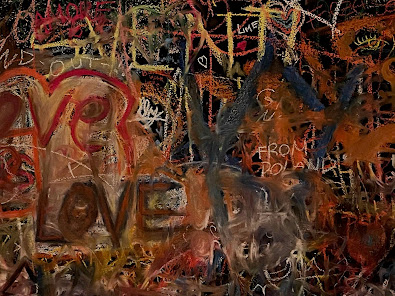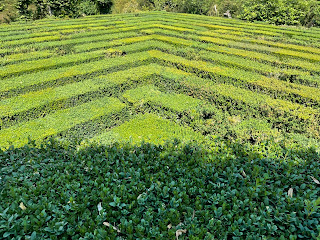In a blog post, followed by a list-serv email, Prof. Rigon exclaimed, “Digital Hydrologists from around the world unite! Nobody applied for this call”! His project focuses on building digital earth twins for the hydrologic cycle using advanced cyber infrastructure and software architecture solutions that are unusual in the field of hydrology in most hydrology groups around the world. He added, “Klemeš, V. (1986) reflected on dilettantism in Hydrology [... we cannot] manage complex interactions and feedback with poorly based informatics”. Prof. Rigon’s outcry indeed makes one think: “Ehi, out there, is anybody interested? Anybody interested in a PhD in this topic?”
It prompted me (Salomon Vimal, see below note by rr) to think -- what can be done to attract top informatics talent into hydrology?
Asterisks marks rr notes that you can find at the bottom.
Hydrology is a tiny field. We are a small sub-field of civil engineering. Among say 100 students who leave high school, conservatively, perhaps 1 in every 3-5 (maybe more!) years of graduation will reach the field of hydrology if lucky, and often by chance. This is an estimate on the basis that nobody in my circles from high school even knows what hydrology is. A subset of them may sign up to list-servs. A small subset (say 1/10) of professors would forward it to interested students in relevant MS programs. The incentives of a PhD salary in Italy, especially $ *, is relatively small compared to what most people with above average skills in tech industry get, so this filters a good portion of them out. Taken together with the fact that 95% of good software tech is developed by only a tiny fraction of the top percentile of the coders (more on this below), it is important to look for the tech talent with a different strategy to attract the cream-dela-creme. These call for a closer look at the tech talent pool and incentives to have them move to the small field **.
Let’s look at Stack Overflow’s (SO) skilled pool of talent. Let's assume SO is a good representative slice of the world's tech talent (which it indeed is). Some observations based on data on distribution of tech talent that can be drawn from Stack Overflow data queries at data.stackexchange.com. It may be helpful to look at how many people, with what skill level, contribution, and reputation are out there. There are 18M total SO users (see the query here). 95% of all activity is by 1M people with a 80 reputation. 80% of all activity is by 0.3M people with 850 reputation. 70% of all activity is by 100K people with 2K reputation. 50% of all activity is by 37K users with 7K reputation. The query example here can be modified to examine percentiles. But the point made here is simple. Most of the work comes from a very small fraction of programmers. For reference, I asked as well as answered 17 questions (a balanced karma) and only a few of my questions were actually appreciated and this puts my reputation score at ~880 (Aug, 2022) which accrued over 5 years or so, and I fall into the bucket of the top 0.3M users, i.e. top 1.6 percentile (by score) reputed users who make 80% of all contributions. My score is nothing compared to the top 50-100K users. While I generally feel comfortable to say that I am good with programming (with over 10 years of experience in Python), I certainly would not apply for the informatics job above, as I do not think I have sufficient skills to start contributing to the informatics/architectural aspect of the project without proper training in CS/IT. I would perhaps defer this position to someone with a score of >2-5K in SO or a degree in CS/IT. Using the query engine and the SQL language offered in Stack Data, one may try to find good metrics like rising stars on SO using one of the many threads on such metrics and pick the good ones to hire from such lists and write to them individually rather than wait for them to find the PhD job post***.
We may consider joint-specializations in PhD: In my previous company (RMS.com), flood models were built using GPU computing. Most of the hydrologists were unable to program with the GPU, but it was indeed developed in academia in a PhD work by someone at Penn State who had a PhD major in hydrology and minor in informatics — computational science, if I remember correctly. Most PhD programs do not offer such minor course work based specialization. Maybe universities can team up with the CS departments and offer a joint PhD in CS - this could be a solution to be attractive to a broader audience. I have no idea about the ground realities of bureaucracy that may impede such a solution, but I recall a double PhD in river science was offered at U. of Trento some years ago. ****
Let’s not forget the blackhole which attracts and retains top talent: Google alone has ~27K engineers (here, estimated for 2022) a good majority of whom are on SO, like the top user. The bulk of the good ones who do 50% of all activities are perhaps already taken by such Big Tech companies so PhD programs are not left with any good ones who have high reputation in SO. I know that Big Tech companies do have a similar approach to identifying top tech talent. If one prefers to do hiring in the more traditional way, one may write to CS department heads in some select universities in global cities that are in countries that would typically consider a move to Italy for PhD.
Consider the places where the bulk of tech talent comes from: The bulk of the top CS talent is arguably in US/China - clearly leaders in tech companies, products and talent - most of them perhaps won't move to Italy for PhD. This basically rules out many top university graduates. We are then left with some of the good institutes in other countries well-known for their contribution to global tech talent. India, for example, has a very strong IT workforce. But, it is better to focus on cities rather than countries in the case of CS expertise. In my experience cities that are Silicon Valley Like (SVL) in various countries might be good places to look. If I were to hire tech talent, I would simply look in the developing SVLs such as Tel Aviv, Bangalore and the NCR Region of India -- which certainly have a very strong talent pool in CS, perhaps not comparable to Bay Area or Shenzhen. I do not know the equivalent SVs of other countries but numerous articles like this one exist which enlist them.
Finally, salaries: Horton wrote about a related issue in hydrologic research (Horton, 1937): "Men of highest degree of knowledge and experience in hydrologic matters are not likely to be employed by government salaries". The cream-dela-creme of the SVLs worldover will get salaries that will be well beyond the incentives of the PhD. In such a scenario, it may be sensible to adopt a different hiring approach and reach out to CS departments of universities strategically and identify candidates who have a demonstrable great level of skill in informatics which we are interested in and fully incentivize them to move to hydrology. For example CS graduates with say 3-5 years of experience from such SVLs may be interested in moving to Italy for the international experience and the good (alternate) life experience, even if the salary cannot per se incentivize a move. *****
It is indeed important for the field of hydrology to thrive with good software personnel who are also sought in all fields of science and all other domains of human pursuit. I hope we all agree this is a core problem with hiring good IT talent. Hydrologists need to hire top IT talent comparable with Big Tech companies to truly create good software as most of the good stuff comes from a small portion of skilled coders. It may be a good idea to give such hiring strategies a careful consideration. I hope my rambling is useful to hydrologists to reflect and find a good solution or hiring strategy.
Solomon Vimal
Solomon Vimal is an avid reader of the About Hydrology blog since 2011. He completed a PhD in hydrology in 2022 from University of California, Los Angeles on the topic, “Climate Change Impacts on Millions of Lakes”. He is now the founder and CEO of Geothara, a tech company currently incubated as a startup company at UCLA’s summer accelerator program and part of the 2022 cohort of the Runway Postdoc program at Cornell Tech in New York City.
About Geothara: Geothara offers geographic change detection and visualization software to help its users explore the changing world using satellite images and a novel, up to 30% more accurate trend detection technique via a patent-pending technology that enables smarter location-specific decisions.
Comments by rr
* However, I would make not just a point of salary. The salary of a PhD student is not high but enough to live in Italy, if you are a young guy. Obviously you expect that the sacrifice bring some benefits. I cannot judge myself, but I believe that you can learn something from studying in Trento that you cannot learn elsewhere.
** small field (if we restrict our focus on digital hydrology) but important for life on Earth and for any community if we think that all is about water availability. After all everything which is alive requires water.
*** when we have our son, I felt somewhat inadequate to the role of father. Then I simply did (and I am doing) it. Never the fear should to succeed to stop you. Try ! PhD is a learning process.
**** That degree would be great to be set up but the start it is subject to the uncertainties and foresight of academic policies
***** unfortunately in Italy the salary is established once forever by the state (ok, maybe the single Universities could give some incentives). I will investigate what is possible.





